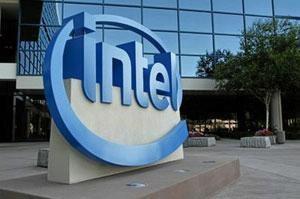February 25, 2018

February 25, 2018

Computer-simulated image of supermassive black hole at the core of a galaxy. The black region in the center represents the black hole's event horizon, where no light can escape the massive object's gravitational grip. The black hole's powerful gravity distorts space around it like a funhouse mirror. Light from background stars is stretched and smeared as the stars skim by the black hole. – NASA/ESA/D. COE, J. ANDERSON AND R. VAN DER MAREL (STSCI)
Scientists have detected a set of gargantuan black holes that are likely the most massive ever discovered in the universe.
The “ultra-massive” black holes are located up to 3.5 billion light years from Earth. They were spotted using data captured by NASA’s Chandra X-ray telescope, a space observatory that has greatly advanced the field of X-ray astronomy.
To make their findings, astrophysicists from the University of Montreal and the Institute of Space Sciences (ISS) in Spain examined 72 galaxies in the middle of some of the universe’s most massive and brightest galaxy clusters. At the center of each of these galaxies—like virtually every other galaxy—lies a supermassive black hole, an area of space with an exceptionally high gravitational field.
The astrophysicists determined the mass of the black holes by analyzing radio waves and X-ray emissions that were picked up by Chandra. They found that more than half of these black holes were 10 billion times more massive than the Sun, a figure that is 10 times greater than what the astrophysicists first predicted. This measurement qualifies them to be described as ultramassive.
"We have discovered black holes that are far larger and way more massive than anticipated," Mar Mezcua from the ISS said in a statement.

A supermassive black hole in a distant galaxy caught by NASA's Hubble and Chandra space telescopes. The galaxy, known as J1354, is about 900 million light years away. – CREDITS: X-RAY NASA/CXC/UNIVERSITY OF COLORADO/J. COMERFORD ET AL.; OPTICAL: NASA/STSCI
Many of the black holes were found to be growing at a faster rate than the stars in their host galaxies. That finding contradicts years of evidence suggesting that these growth rates should be roughly similar. The new findings are described in a study published in the Monthly Notices of the Royal Astronomical Society.
The researchers note that such stunning findings are somewhat par for the course for these regions of space. "We do know that black holes are extraordinary phenomena," added Julie Hlavacek-Larrondo, an astrophysicist at the University of Montreal, "so it's no surprise that the most extreme specimens defy the rules that we have established up until now."
Black holes of such extreme masses are some of the most powerful objects in the universe, exerting a huge influence on the surrounding region of space. But exactly why the ones identified in the new study are so large remains unexplained. "Are they so big because they had a head start or because certain ideal conditions allowed them to grow more rapidly over billions of years?" said Mezcua. "For the moment, there is no way for us to know."
Courtesy/Source: Newsweek












































































































